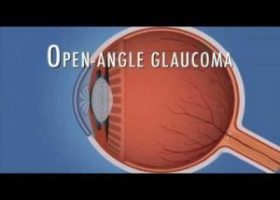- Home
- Editorial
- News
- Practice Guidelines
- Anesthesiology Guidelines
- Cancer Guidelines
- Cardiac Sciences Guidelines
- Critical Care Guidelines
- Dentistry Guidelines
- Dermatology Guidelines
- Diabetes and Endo Guidelines
- Diagnostics Guidelines
- ENT Guidelines
- Featured Practice Guidelines
- Gastroenterology Guidelines
- Geriatrics Guidelines
- Medicine Guidelines
- Nephrology Guidelines
- Neurosciences Guidelines
- Obs and Gynae Guidelines
- Ophthalmology Guidelines
- Orthopaedics Guidelines
- Paediatrics Guidelines
- Psychiatry Guidelines
- Pulmonology Guidelines
- Radiology Guidelines
- Surgery Guidelines
- Urology Guidelines
Hydrus microstent reduces IOP and medicine need in glaucoma patients, finds Study

USA: The use of Schlemm canal stenting via Hydrus microstent at the time of cataract surgery safely reduced intraocular pressure (IOP) and glaucoma medication burden in patients with mild to moderate primary open-angle glaucoma (POAG), according to a recent study published in the Journal of Cataract & Refractive Surgery.
Jason Jones, Jones Eye Clinic, Sioux City, Iowa, USA, and colleagues assessed the safety and efficacy of Schlemm canal stenting in combination with cataract surgery in eyes with mild to moderate primary open-angle glaucoma in this prospective, randomized clinical trial.
The study included 331 patients from the US cohort of the HORIZON trial. Patients with a diagnosis of mild to moderate POAG, taking 1 to 4 glaucoma medications and having an unmedicated IOP of 22 mm Hg to 34 mm Hg after medication washout.
Two hundred nineteen patients were randomized to Hydrus microstent implantation at the time of cataract surgery while 112 patients were randomized to phacoemulsification alone.
Also Read: After cataract surgery, IOL implantation not recommended for children 6 months or younger
Key findings of the study include:
- At 24 months, unmedicated diurnal IOP was significantly reduced by 20% or more in 78.5% of the microstent group and 54.5% of the phacoemulsification-only group.
- In the microstent group, 78.5% of patients were medication-free compared with 39.2% in the phacoemulsification group.
- There was a mild loss of endothelial cells in the microstent group at the 3-month microscopy evaluation, but this stabilized and did not worsen at the 24-month follow-up.
Also Read: Tri-Moxi injection, a promising substitute for eye drops after cataract surgery
"For patients with mild to moderate POAG, microstent placement at the time of cataract surgery can safely reduce IOP and glaucoma medication burden. The combination procedure had comparable visual acuity outcomes and rates of adverse ocular events to cataract surgery alone," concluded the authors.
More Information: "Results from the United States cohort of the HORIZON trial of a Schlemm canal microstent to reduce intraocular pressure in primary open-angle glaucoma" published in Journal of Cataract & Refractive Surgery.
DOI: https://doi.org/10.1016/j.jcrs.2019.03.024
Journal Information: Journal of Cataract & Refractive Surgery

Disclaimer: This site is primarily intended for healthcare professionals. Any content/information on this website does not replace the advice of medical and/or health professionals and should not be construed as medical/diagnostic advice/endorsement or prescription. Use of this site is subject to our terms of use, privacy policy, advertisement policy. © 2020 Minerva Medical Treatment Pvt Ltd